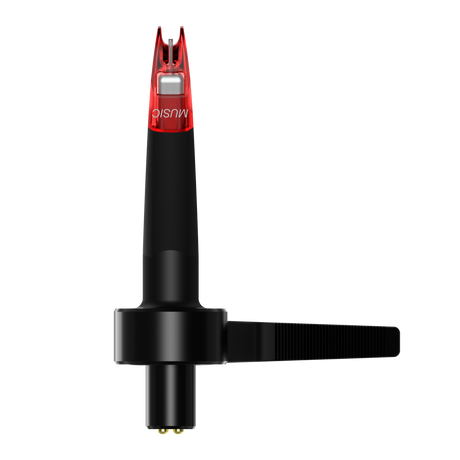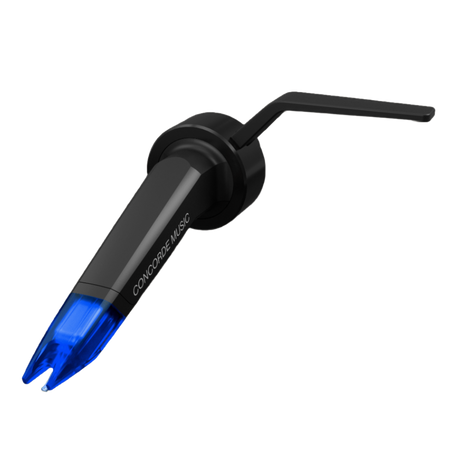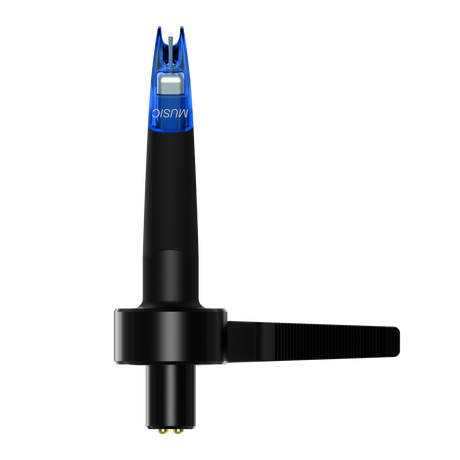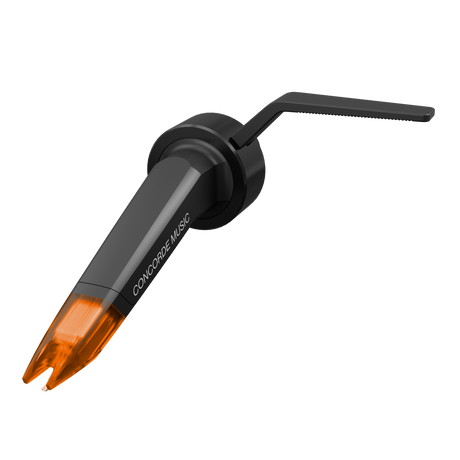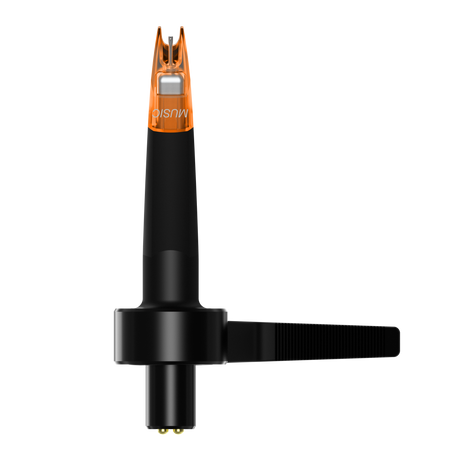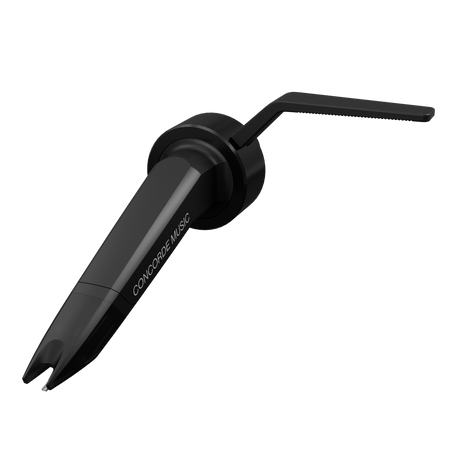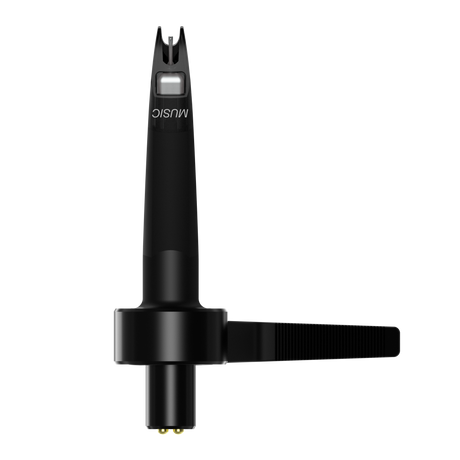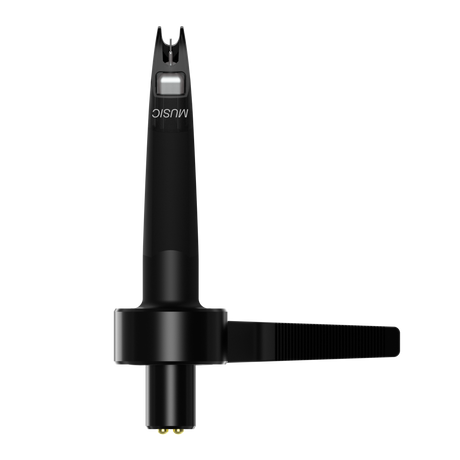Cuando una Cápsula Se Convirtió en Leyenda
Si alguna vez has puesto un disco con una Concorde, eres parte de una historia que comenzó en 1979, cuando Ortofon presentó una cápsula que parecía pertenecer más a un túnel de viento que a un giradiscos. Lo que siguió fue una historia de contratiempos técnicos, premios de diseño y la creación de una cápsula que ayudaría a definir una era del vinilo.
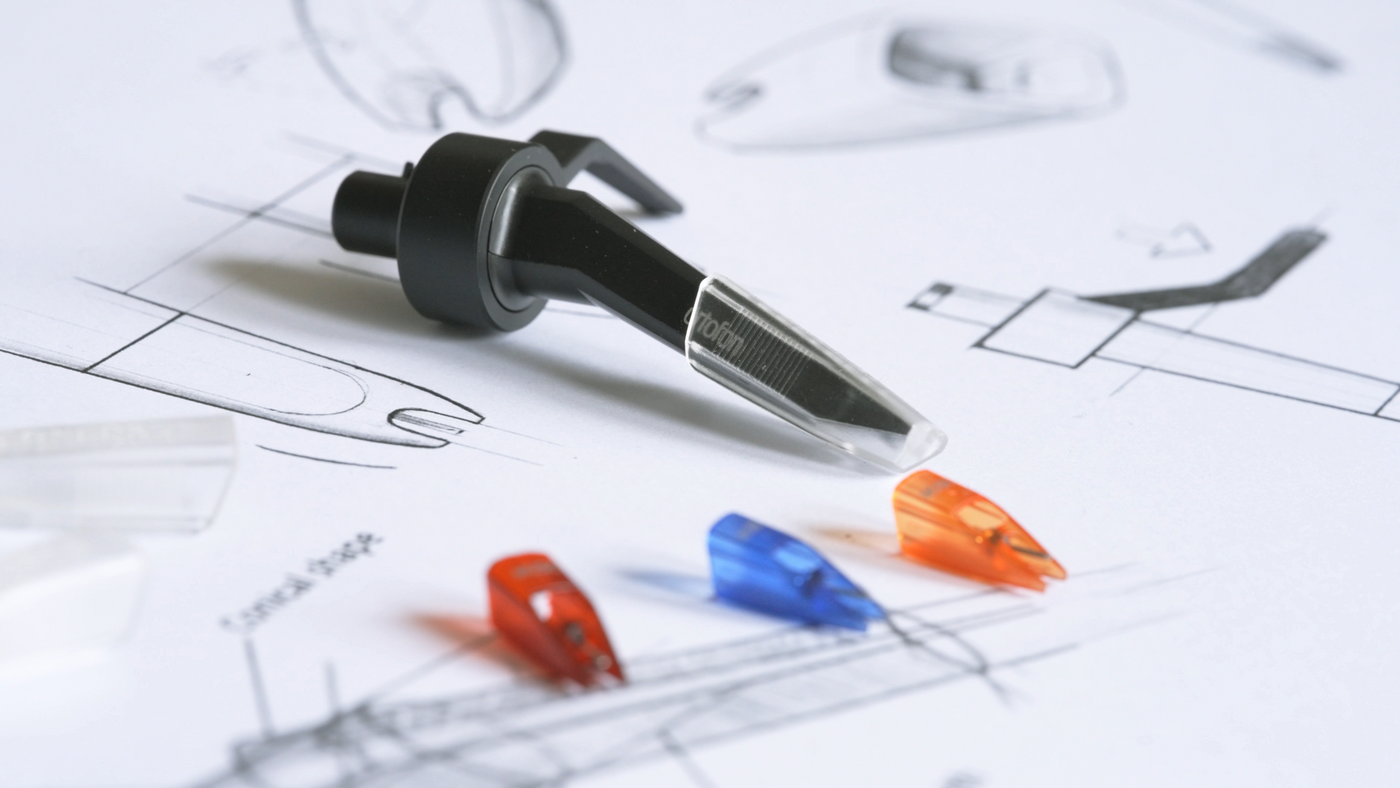
Un diseño audaz
que lo cambió todo
Ortofon fue pionera antes en el concepto de portacápsulas integrado con el SPU – una cápsula clásica de bobina móvil, de alta masa, pensada para brazos tipo SME. Pero Concorde supuso una revolución total: una evolución moderna y ligera del principio SPU, dirigida a un público nuevo y más amplio.
El Concorde nació de dos objetivos: desarrollar una aguja de menor masa para el sistema VMS de Ortofon, y crear una cápsula integrada a su portacápsulas que pudiera montarse sin tornillos ni cables. Con un diseño elegante, fluido y minimalista, el Concorde rompió todos los esquemas previos.
Su silueta fue desarrollada junto al reconocido diseñador industrial danés Møller Jensen, quien aportó la visión que dio forma a la hoy icónica cápsula. “Pensamos: esto es absolutamente distinto”, recuerda Niels Jespersen, Gerente de Ventas en ese momento, en A Century of Accuracy in Sound: The Ortofon 100-Year Anniversary Book. “En una reunión, tenía un prototipo en la mano y lo coloqué de pie sobre la mesa. Parecía el obelisco de Luxor en la Place de la Concorde de París. De hecho, el frente del avión Concorde también se parecía mucho a la cápsula. Todos dijimos: ‘Ese nombre cuadra, parece un Concorde’.
El impresionante diseño de la cápsula Concorde recibió el prestigioso Danish Industrial Design Award en 1979.
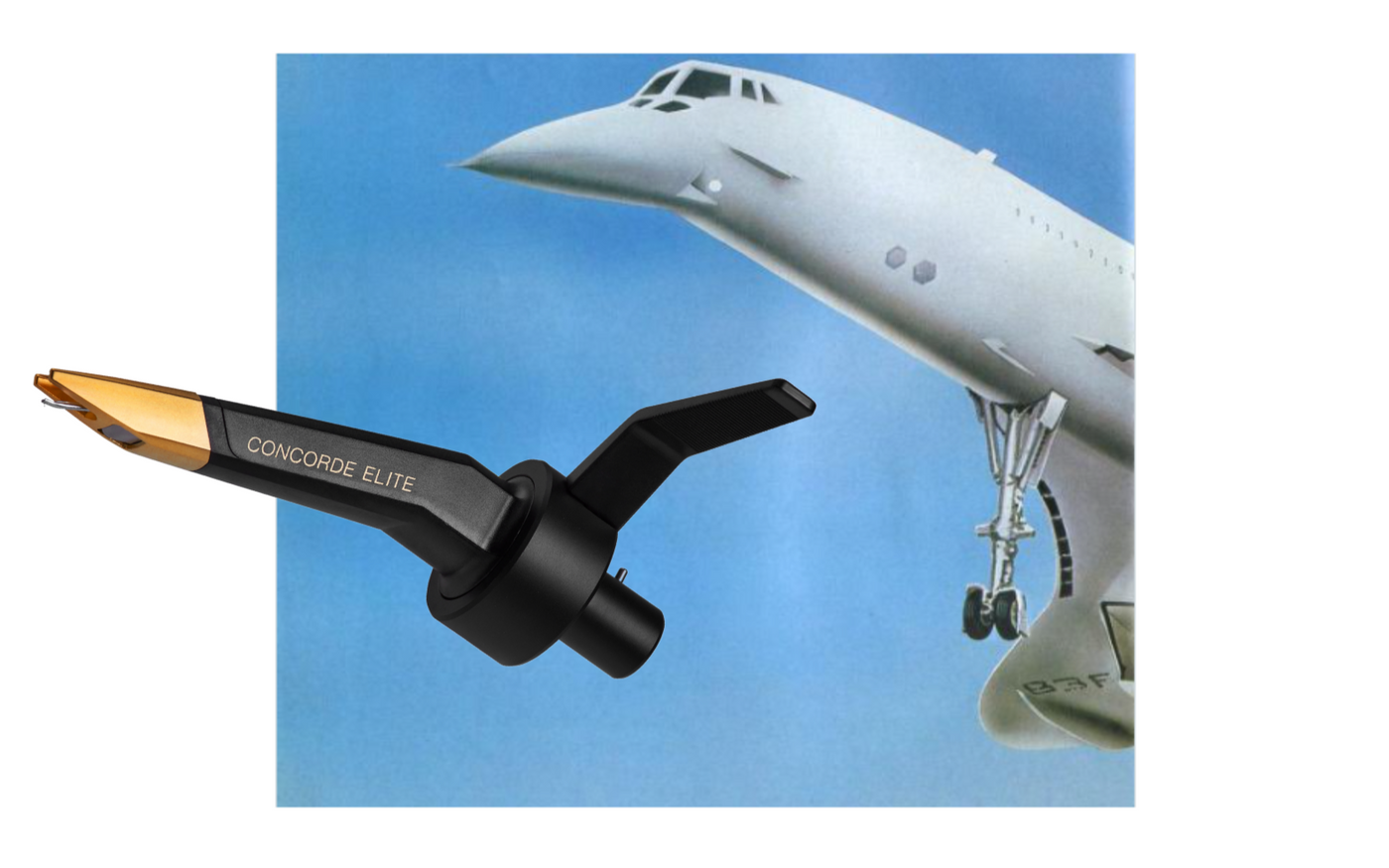
Innovación frente a los desafíos
“Fue toda una sensación gracias a su diseño increíble. Pero la historia empezó siendo un fracaso”, contó Erik Eriksen, uno de los ingenieros del proyecto Concorde, en A Century of Accuracy in Sound. Ortofon había sobreestimado la cantidad de giradiscos con sistemas de montaje SME en el brazo. Si tu giradiscos no los tenía, simplemente no podías usarlo. Además, los brazos de los giradiscos convencionales no lograban equilibrarlo porque era demasiado ligero. El contrapeso no podía acercarse lo suficiente para compensar el peso.
La solución fue añadir una pequeña pieza de metal entre la cápsula y el brazo, para sumar peso adicional. Al mismo tiempo, Ortofon presentó los modelos LM 20 y LM 30: cápsulas pensadas para brazos de montaje estándar de media pulgada, logrando una compatibilidad mucho más amplia que la Concorde. Aunque tenían una forma más convencional, los modelos LM seguían la línea visual única de Concorde, tanto en su parte frontal como en el diseño de la aguja, y anticiparon lo que después sería la OM series – presente hoy en muchísimos giradiscos.
Aunque esta solución era práctica, no coincidía del todo con el espíritu de la marca de buscar siempre diseños elegantes. Aun así, funcionó, y la Concorde inició su camino.
Unos años después del despegue de Concorde, surgió una variante Moving Coil llamada MC 200. “Recuerdo que el MC 200 nació a partir del feedback que dimos durante las sesiones del Golden Ear Panel*”, comentó Eriksen en A Century of Accuracy in Sound. “En países como Alemania y Reino Unido fue un éxito inmediato. Incluso hoy, sigue siendo una cápsula con un sonido espectacular.”
Junto con el MC 100, que salió prácticamente a la vez, el MC 200 ayudó a llevar el diseño y el rendimiento de Concorde al universo de Moving Coil. Como decía el material promocional de MC 200, recibió “elogios y premios de expertos en audio de todo el mundo, incluido el Grand Prix de Stereo Components de Japón – el trofeo más deseado de la industria HiFi.”
*El Golden Ear Panel
En los años setenta y ochenta, el club interno Golden Ear fue fundamental en la evaluación crítica de cápsulas Ortofon. Los empleados podían postularse para ser parte del panel de oyentes Golden Ear. Para entrar, necesitabas pasar una prueba de audición, y el panel se componía tanto de oídos muy entrenados como de otros menos experimentados — sumando distintas perspectivas a la de los ingenieros expertos de Ortofon y escuchando de una manera diferente a, por ejemplo, los reseñadores de HiFi. Este método aportó una visión fresca del sonido y ayudó muchísimo en el desarrollo de cápsulas.
Colección destacada
-
€149,00Precio unitario /Agotado
-
€249,00Precio unitario /Agotado
-
€399,00Precio unitario /Agotado
-
€599,00Precio unitario /Agotado
-
€999,00Precio unitario /Agotado
De Home HiFi a DJs de Club Nocturno
Originalmente destinada para uso HiFi doméstico, el rol de Concorde evolucionó dramáticamente. En la década de 1980, los DJs se mantenían fieles al vinilo, incluso cuando el resto de la industria se movía hacia lo digital, y Ortofon respondió. En 1984, la compañía introdujo modelos específicos para DJs como las cápsulas de color plateado Concorde Pro y OM Pro, diseñadas para soportar las exigentes demandas de los entornos de clubes, hip-hop y scratching. Estos modelos contaban con suspensiones de aguja reforzadas capaces de manejar altos niveles de tracking, convirtiéndolas en herramientas indispensables para DJs profesionales en todo el mundo.
En 1989, Ortofon lanzó la Concorde Nightclub Series, un claro reconocimiento de lo vital que se había vuelto este público. La cultura DJ no solo abrazó a Concorde, sino que ayudó a asegurar la relevancia continua de Ortofon.
Llevando a Concorde al Completo Círculo
Ha estado en remodelación continua desde entonces, evolucionando desde su propósito original como cápsula HiFi doméstica hasta su ahora venerado estatus como cápsula para DJs de club nocturno. Y finalmente, con la introducción de la nueva Concorde Music HiFi Series, está regresando una vez más al mundo del audio de alta fidelidad.
La Concorde MkII Series sigue siendo de confianza para los DJs de todo el mundo, mientras que la Concorde Music Series lleva su legado a los entornos de escucha en el hogar.
Nacida del diseño. Refinada por DJs. De vuelta en el HiFi.
La Concorde es más que una cápsula: es un legado.



